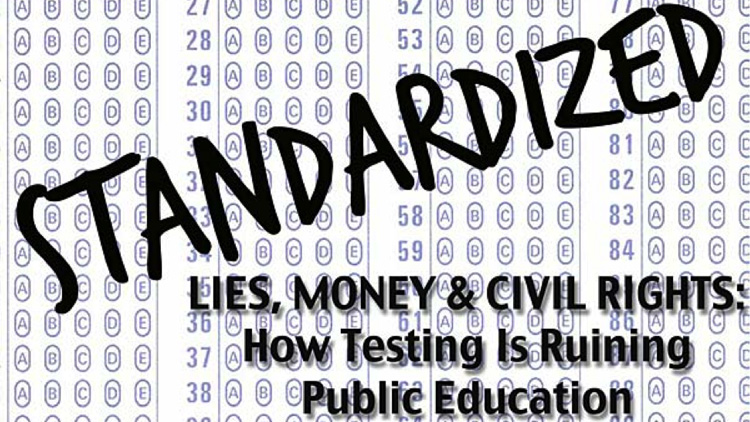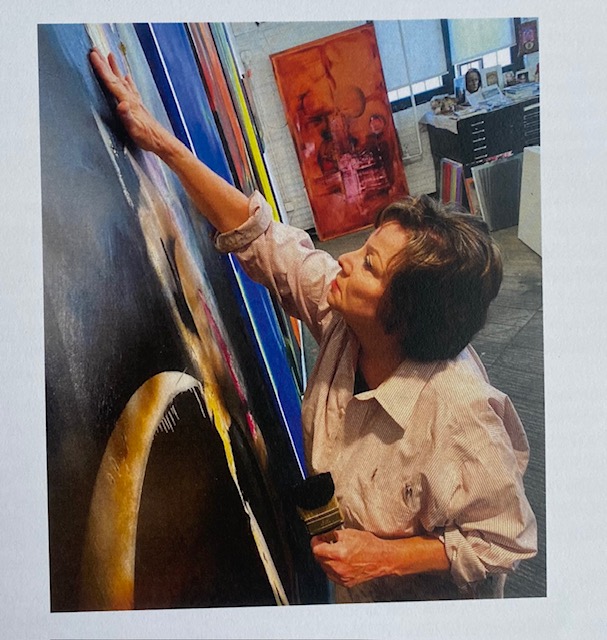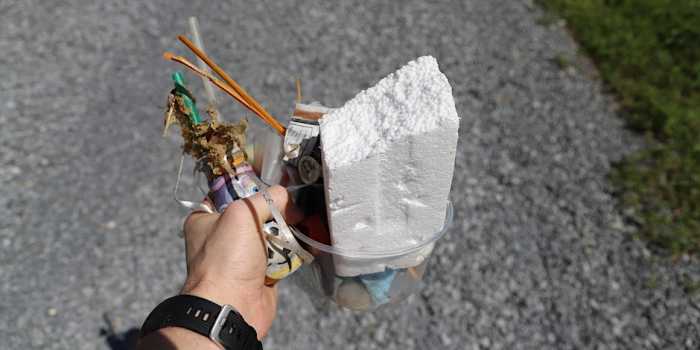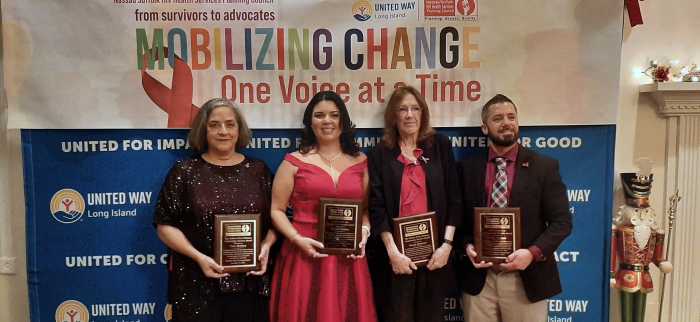A 6-foot-tall pencil joins a life-sized Scantron sheet in thunderous applause when a 9-year-old kid dresses down Chicago Mayor Rahm Emanuel, decrying, “That’s racism!” Cheers erupt at the appearance of a silver-haired man onscreen. In the audience, someone bearing a remarkable resemblance stands to wave at the crowd, the raised fist on his black T-shirt marked with the same letters of the tattoo that covers his bicep: BAT.
This isn’t a midnight showing of The Rocky Horror Picture Show, despite all the costumes and raucous characters. This is the auditorium of Rockville Centre’s South Side High School on Jan. 13, where approximately 120 students, teachers and education advocates witnessed the latest front in what has been an all-out war against Common Core, the education reform created by the National Governors Association and the Council of Chief State School Officers and financed with more than $4 billion of “Race to the Top” funds as part of the 2009 American Recovery and Reinvestment Act.
The documentary Standardized: Lies, Money, and Civil Rights: How Testing is Ruining Public Education, the brainchild of producer and former teacher Daniel Hornberger, is a powerful artistic translation of this both cerebral and passionate battle. It stars real-life parents, teachers and experts from across this country testifying as to how schools are being destroyed by this federal education mandate—the Obama Administration’s answer to predecessor George W. Bush’s No Child Left Behind Act. The groundswell of protest from parents and teachers is quickly reaching critical mass, causing politicians who had previously dismissed critics of the reform to reconsider their positions. In New York, State Education Commissioner John King faces a vote of “no confidence” by the teachers’ unions for implementing the program. Standardized’s cinematic examination of the effects of high-stakes standardized testing on schoolchildren and the multi-billion-dollar industry perpetuating it comes as the battle here on Long Island is really heating up.
The inspiration for the film comes from the book Making the Grade, by author Todd Farley, who spent his career working in the standardized testing industry and confirmed Hornberger’s suspicions that high-stakes testing not only stifles the creativity of teachers and is harmful to students, but it’s ultimately fraudulent, too.
“Anyone who’s ever been in a test-scoring center can see that, as the places are filled with characters—people I heard called ‘the uglies’ and ‘un-hirables’—while the work itself is ridiculous and maddening but at times very, very funny,” Farley tells the Press. “Of course, it’s funny only if those tests aren’t being used to make actual decisions about students, teachers, and schools—if those decisions are being made based on the work I used to do, that seems pretty insane to me.”
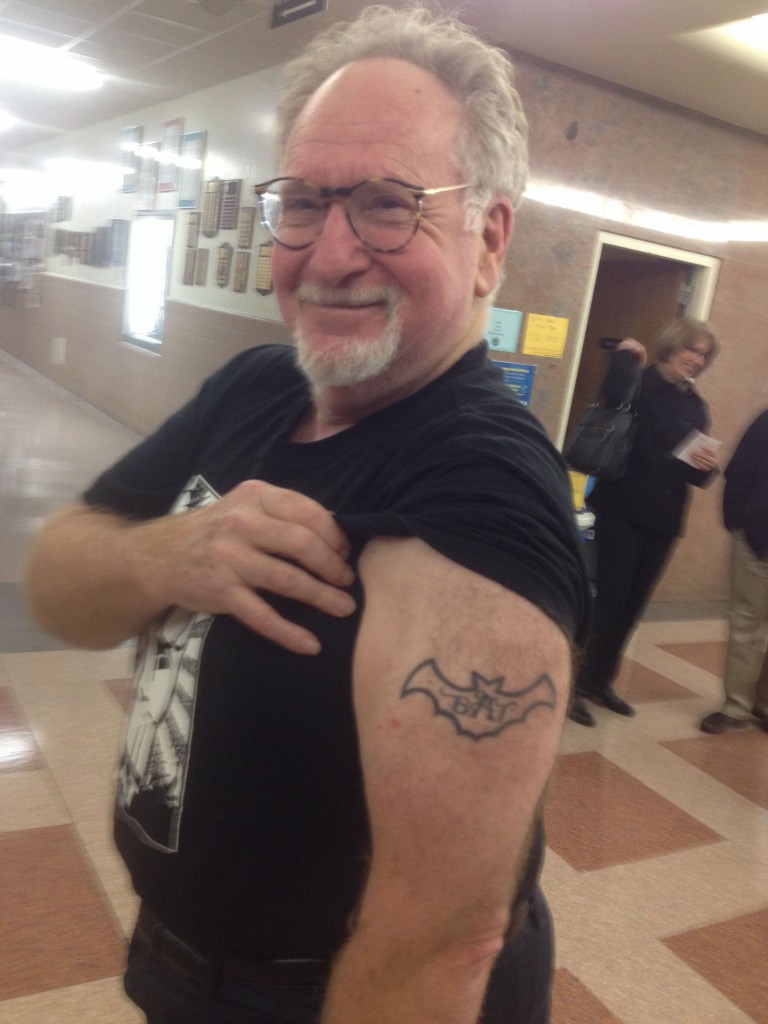
The book begins with Farley’s first day on the job, when he is asked to give third-grade students pass/fail grades based on their drawings of bicycle safety. The rubric was simple: If they showed a clearly identifiable safety rule, they passed. Farley thought it’d be a breeze.
He was wrong.
The book describes Farley’s first assessment: a child with a helmet strapped to his chin jumping a fiery pit of lava. Farley quickly clicked the “fail” button. But, because the lava-jumping child wore his helmet, a safety rule was demonstrated. So the student passed, even though Farley felt a helmet wouldn’t save a child’s head from liquid fire. No matter, he was advised. Move onto the next.
Farley shrugged at the inconsistency of the grading policy and made a career in the standardized testing industry, where he earned plenty of money. He disagreed with the absurdity by which these tests were graded, but trusted that the elites who were in charge knew what they were doing—and thus spent his career not questioning them.
That’s until his conscience could take it no longer. The prevalence of standardized tests and the fact that the entirety of education reform rests on them woke him to the realization that the living he had made so comfortably was hurting a generation of children.
“The standardized testing industry is basically a for-profit endeavor with a long, well-documented history of fuck-ups that is completely unregulated, so you should trust it only if you feel good about trusting big businesses being run entirely on the honor system,” he concluded in an interview. “That seems problematic to me, which is why I’ve always thought large-scale assessment was one big (really lucrative for all-involved) scam.”
Standardized outlines the details of that scam in unmistakable clarity: from the political origins that began education reform and perpetuated it, crossing both political parties, to the business end of the testing machine. Hornberger entrusted much of his vision to Co-director and Director of Photography Jim Del Conte, without whom he says the film never could have been made.
“Jim’s insight as a photographer and skills as an editor made this film solid in terms of visuals and pacing,” he says.
Hornberger interviewed teachers and education policy experts, mothers and administrators to uncover the systemic culture pervading education policy, including the racial implications accompanying what many see as the eventuality of this reform: the closing of public schools.
Standardized drives this point home in a scene from a Chicago protest rally, where thousands took to the street—capturing the fury and despair of those displaced by the school closings and making it real for viewers.
The unchallenged star of the film is 9-year-old Asean Johnson, who took on Mayor Emanuel on the historic closing of more than 50 public schools in Chicago’s mostly black and Hispanic communities.
“Rham Emanuel is not caring about our schools. He’s not caring about our safety,” he charges in an electrifying scene. “You should be investing in these school, not closing them. You should be supporting these schools, not closing them. We are not going down without a fight. This is racism,” he accuses.

Dr. Mark Naison, a professor of history and chair of African and African American studies at Fordham University, concurs. In the film, Naison condemns Race to the Top as so much worse than No Child Left Behind because it “insists that you have to close schools, that you have to rate teachers and schools on the basis of student test scores, and you have to give preference to charters. Barack Obama has done more damage to public education than any president in modern history,” he blasts.
At South Side High School, Naison responds to cheers with a grin and a raised fist—like the one emblazoned across his T-shirt—which echoes the sentiment of his “BAT” tattoo. BAT is the acronym for Badass Teachers, a group of more than 36,000 teachers who use the association as an outlet for both the creativity they feel is stifled by Common Core as well as a place to find solace and validation among other professionals who understand how dispiriting teaching has become under the constant threat of the education reform’s harsh penalties against instructors. Naison is co-founder of the movement with Oceanside teacher Marla Kilfoyle. He not only stars in the film, but has also been a vocal opponent in protests from New York to Washington.
The audience gasped throughout the testimony of Judge Rick Roach, who is in his fourth four-year term on Florida’s Orange County Board of Education. He subjected himself to the literacy tests that the children were condemned to—and failed, his two Masters degrees notwithstanding. His example speaks to the core of the protest: the invalidity upon which these tests are based. That the entire education system is dependent on these tests is the terrifying verdict Hornberger successfully drives home time and time again in the film.
“For me, the process was frustrating and exhilarating at the same time,” Hornberger tells the Press. “The more I learned about the testing industry, the angrier I became. But due to the input of the terrific people in the film, I felt justified in doing what I was doing.”
The film ended to robust applause and an emotional question-and-answer session, where parents voiced their frustrations. Though Hornberger had a long drive back to Pennsylvania, he led a discussion for more than an hour afterwards. Yet still, the audience was hesitant to leave.
Naison was impressed by the film’s scope, remarking that it would undoubtedly inspire anger among parents who watched it.
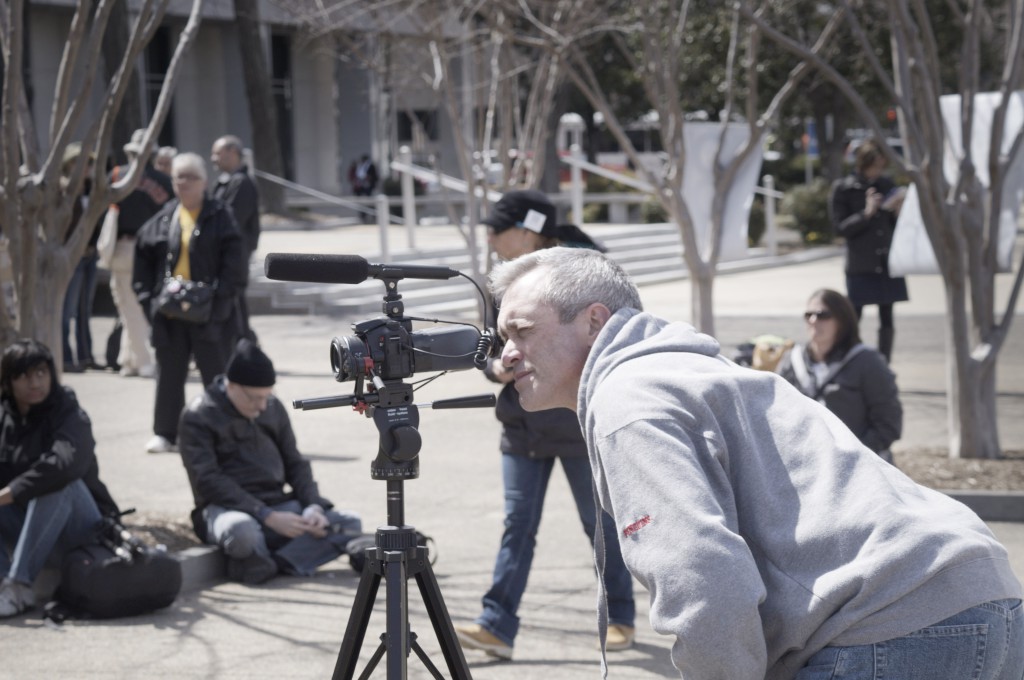
“I think anyone who watched Standardized, especially parents with children still in public school, came away appalled at what is being done to the nation’s children through uncontrolled testing, and enraged that these policies are supported by leaders of both major parties,” he says. “After the Long Island showing, the discussion among the audience was all about ‘what can we do to stop this?’ ”
Anthony Griffin, the life-sized pencil and co-founder of Lace to the Top, a group of advocates who display bright green shoelaces to convey their message that kids are more than test scores, believes that Standardized provides the answer: to opt-out of the tests.
“Standardized exposes the damage an education reform based on numbers and profits has on our children and schools,” he tells the Press. “In addition to great interviews about the problems and dangers of high-stakes testing, Standardized offers ‘the answer key’ for families and schools that want education to be about more than cut scores [state-determined passing grades], data points, and scripted lessons.”
The last of the audience members trickled out of South Side well after 10 p.m., forming clusters and exchanging ideas. Opt-Out signs were hoisted out of the trunks of cars and shared. Bright green shoelaces changed hands. Friend requests were sent.
And BATs took off into the night.
South Side High School’s Jan. 13 screening of Standardized was the second stop on a national tour of high schools, colleges and theaters. For future dates, destinations and to learn more, check out standardizedthefilm.com.




